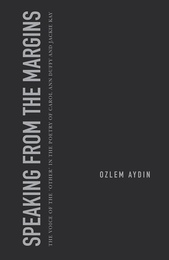Tent of Miracles: Myth of racial democracy
Jump Cut: A Review of Contemporary Media
Number 21 (November 1979)
pages 20-22
Joan R. Dassin
Tent of Miracles (Tenda dos Milagres), says its director Nelson Pereira dos Santos, is a clear direct film that confronts a human question—that of racial discrimination—with great frankness and humor.
Completed in December 1975 and first shown in Brazil in October 1977, Tent of Miracles, based on Jorge Amada’s novel, is indeed a richly-peopled, plain-speaking, and even light-hearted picture about the persecution and survival of black African culture in Brazil. With this focus, Nelson Pereira—the patriarch of nationally-minded filmmakers in Brazil for nearly 25 years—has challenged the most widely-held false belief in his society: the myth that Brazil is a racial democracy.
…This visual parable of “whitening” reveals the ideology implicit in the film’s defense of racial crossbreeding. It also undercuts the energetic and upbeat presentation of an autonomous Afro-Brazilian culture. Unwittingly, perhaps, Nelson Pereira repeats the error of both his literary source (Bahian novelist Jorge Amado’s 1969 novel, Tent of Miracles) and an earlier classic of Brazilian social history (Gilberto Freyre’s The Masters and the Slaves of 1933). Both works uncritically advocate miscegenation.
Traditionally celebrated in Brazil as the means to ensure the tranquil mingling of the Portuguese, indigenous, and African races, miscegenation has long been glorified as the basis of the “cordial” national character. In contrast, the recognition that in siring the Brazilian race the Portuguese colonizers brutally imposed their will on black female slaves—after largely exterminating or subjugating recalcitrant Indian laborers—has spread very slowly. Indeed, historical truth has only recently made inroads into the national myth that Brazilians are the harmonious products of these three races, and live in an untroubled racial democracy.
As Brazilian culture critic Sergio Augusto has pointed out, miscegenation—both as a practice and as a widely espoused doctrine—has had two pernicious effects. Rather than fostering egalitarianism, miscegenation has promoted “whitening.” Most seriously, it has denied to blacks (Indians being long out of the picture) the opportunity to develop their cultural identity as an independent group. Another Brazilian commentator, Muniz Sodré, seconds this view. Miscegenation’s hidden value of “whitening,” he asserts, is in fact a rejection of black culture in Brazil, a relegation of the Afro-Brazilian inheritance to a “source of sensationalism, a plethora of genital tricks, and an eternal supplier of recipes.”
Lamentably, Tent of Miracles does not explore these negative consequences of miscegenation for black cultural survival in Brazil. On the contrary, the philosophy of “whitening” that lies behind supposedly egalitarian racial crossbreeding is visually and emotionally reinforced by the “success story” of Tadeu Canhoto. The U.S. viewer will probably miss the subtle racist implications of lauding miscegenation, because here the “mixed” population is considered black, and as such, is clearly subject to the will of the white majority. But in Brazil, the color line is not drawn so sharply. Indeed, the “democratic” mixing of races is the cornerstone of the dominant national ideology of race, ironically described by Brazilian sociologist Florestan Fernandes as “the prejudice of having no prejudice.”
Defenders of the doctrine of miscegenation and the myth of racial democracy come from all quarters in Brazil. Gilberto Freyre, who with Jorge Amado is the greatest popularizer of Brazil for North Americans, has proudly noted that Brazil is growing ever “browner.” Freyre sees this trend as “proof” that the Brazilian “meta-race,” supposedly formed in equal parts by blacks, Indians and whites, is at last emerging. Even some Brazilian blacks have themselves proposed miscegenation so that “the negro will disappear and we will not have racial conflict like they do in the United States.” As the young black Brazilian historian Beatriz Nascimento recently reflected, the 18th century dictum that “Brazil is a hell for blacks, a purgatory for whites, and a paradise for mulattos” is still the accepted national vision. The vision has only one catch: it is predicated on the “total disappearance” of those who live in “hell.”…
Read the entire article here.


